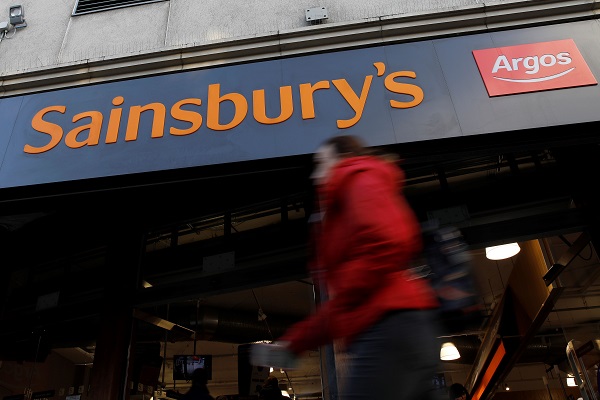No dancing in the aisles at Sainsbury's after Q1 results
5th July 2022 08:07
by Richard Hunter from interactive investor
It's underperforming market leader Tesco and the shares are down heavily in 2022 so far. Our head of markets runs through latest results from the UK's second biggest supermarket.

There will be little dancing in the aisles following this update from Sainsbury (J) (LSE:SBRY) as the supermarket chain struggles to maintain momentum.
Set against ever tightening competitive screws, Sainsbury's had its work cut out on any number of fronts going into the statement. And the ferocity of competition in the sector is plain to see.
Against strong comparatives from a partial lockdown last year, each of the main categories have fallen in the 16 weeks to 25 June, with Grocery sales down 2.4%, Argos 10.5%, General Merchandise 14.6% and Clothing 10.1%. The picture is marginally better against pre-pandemic sales, although still mixed, with Grocery up 8.7% and Clothing up 3.9%, but Argos down 4.5% and General Merchandise down 13.8%.
- Stockwatch: how plunging confidence might hit company profits
- The Week Ahead: Sainsbury’s, Entain, Persimmon
Unsurprisingly, the company is at pains to point out a slightly improving trend over the quarter where, for example, Argos sales were down by 19% over the first five weeks, but down 7% over the last 11 weeks. A similar trend was seen in clothing, with reported sales being down by 26% and 2% respectively and in GM by 30% and 5%.
More broadly, Sainsbury's is attacking costs, investing in price promotion and strengthening its balance sheet. The performance of its banking business is now moving in the right direction, with robust cash flows enabling an extremely generous dividend yield of 6.3%, a clear example of investors being paid to wait as the group ploughs on with its strategy.
However, the cost of living crisis and supply chain issues remain, while the competition shows no signs of slowing down. A recent industry survey showed that sales over the last three months had declined by almost 4% at Sainsbury, with its market share dipping to 14.9% from a previous 15.2%.
At the same time, although the company is maintaining guidance for full-year underlying pre-tax profit to come in between £630 million and £690 million, this would represent a decline from the previous year’s number of £730 million, underlining the pressure on sales despite the group’s other strategic measures.
- The dividend hero shares fund managers are backing for the long term
- Chart of the week: are bombed-out easyJet shares now a buy?
Despite something of a relief bounce in opening exchanges, the share price has reflected the company’s current travails, having dropped by 23% over the last year, as compared to a marginal gain of 1% for the wider FTSE100.
Competition in the sector remains intense, ranging from a resurgent Tesco (LSE:TSCO) to the price discounters Aldi and Lidl. The market consensus of the shares as a hold suggests that the jury is currently out on Sainsbury’s immediate prospects, with Tesco (strong buy) being the clearly preferred play.
These articles are provided for information purposes only. Occasionally, an opinion about whether to buy or sell a specific investment may be provided by third parties. The content is not intended to be a personal recommendation to buy or sell any financial instrument or product, or to adopt any investment strategy as it is not provided based on an assessment of your investing knowledge and experience, your financial situation or your investment objectives. The value of your investments, and the income derived from them, may go down as well as up. You may not get back all the money that you invest. The investments referred to in this article may not be suitable for all investors, and if in doubt, an investor should seek advice from a qualified investment adviser.
Full performance can be found on the company or index summary page on the interactive investor website. Simply click on the company's or index name highlighted in the article.